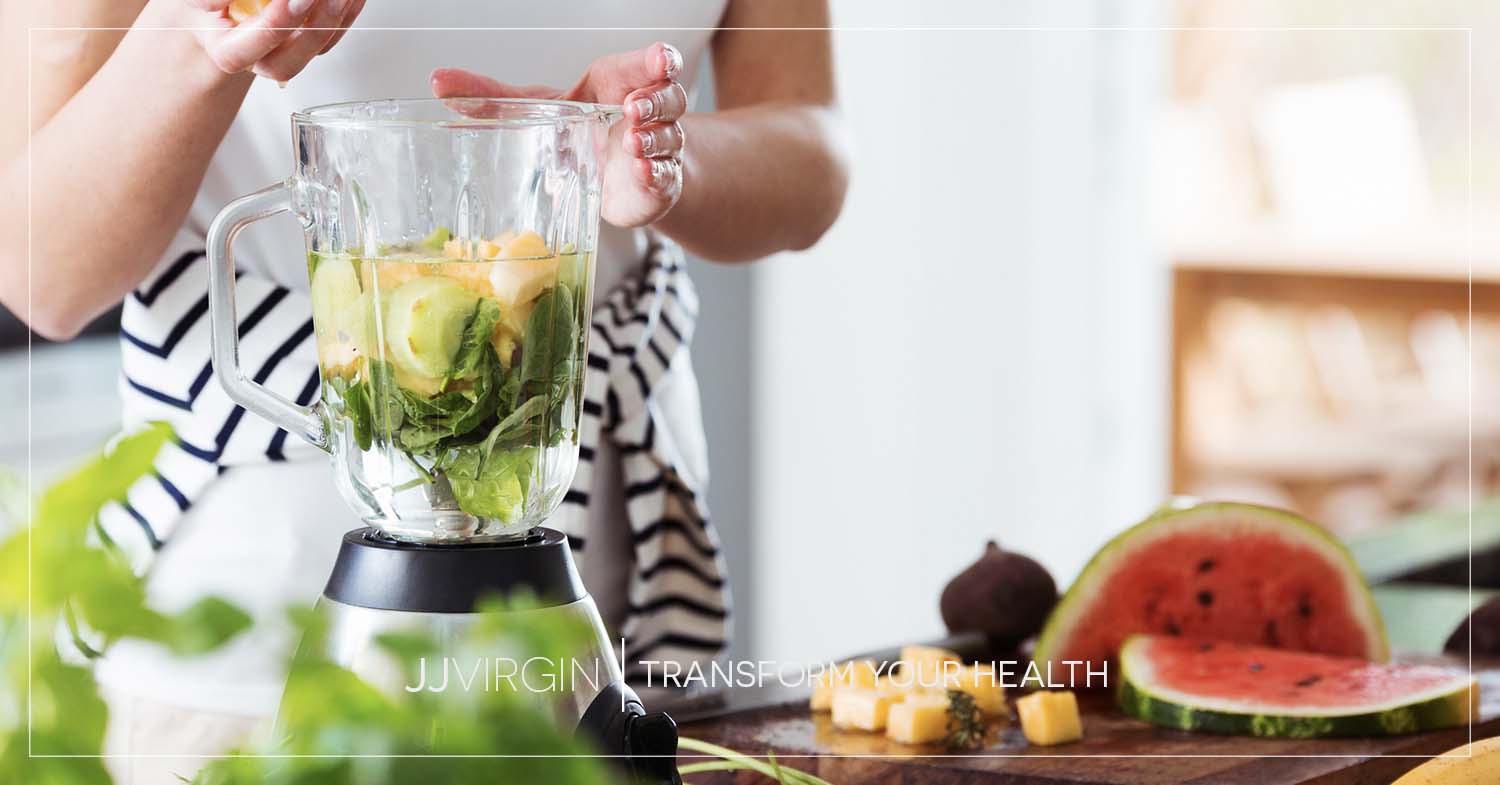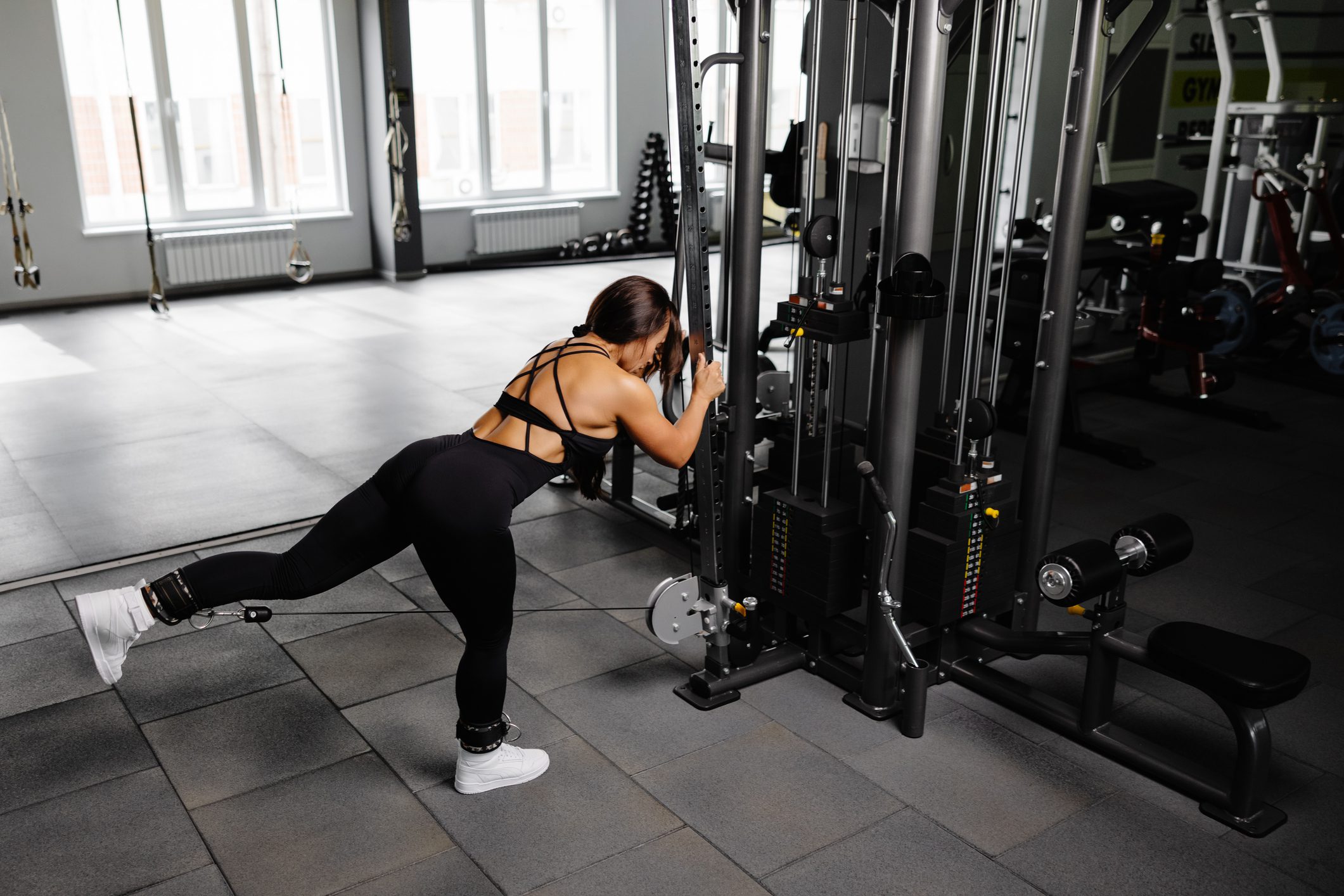It’s no secret that I’m a big fan of starting my day with protein. There are so many benefits that I’ve made daily protein-loaded smoothies a part of my healthy lifestyle for more than 30 years!
And I’m not alone. The simple habit of drinking a high-protein shake every day has been the #1 needle-mover to help thousands of people achieve their health goals, including:
- Losing stubborn pounds. Protein is the most satiating nutrient.1 When you get enough of it at every meal—I recommend aiming for about 100 grams a day, or about 30+ grams per meal, or more if you’re recovering from illness or injury—you’re not going to keep reaching for other food and putting on extra weight.
Tons of clinical research backs this up. In long-term clinical trials, consuming protein-rich diets helped participants not just lose weight, but also keep it off.2 This was thanks in part to the way protein works in your body. At the same time it’s promoting the hunger hormones that help you feel full, it’s efficiently burning energy to help you shed weight. That led the study’s leaders to conclude that increasing protein intake was the smartest, safest way to lose and keep off weight. - Keeping blood sugar balanced and cravings at bay. If you don’t eat enough protein, you’re going to be hungry. And when you’re hungry, you might find yourself reaching for foods high in sneaky sugars. Along with not providing you with any nutritional benefits, these foods are going to cause your blood-sugar levels to spike. Over time, these patterns can inhibit your hunger hormone leptin, which plays a role in telling your brain that you’re full. When it’s not functioning well, you can miss satiety signals and crave more food.
- Promoting muscle and bone health. Muscle mass declines every year as you age, sometimes starting as early as your 30s (though more often in your 40s).3 This puts you at a higher risk for things like falls, mobility challenges, and bone fractures. Proper protein counteracts that loss, helping your muscles and bones stay strong enough to stave off frailty and keep doing the things you love.
To give your bones even more of a boost, I recommend my Complete Bone Support. It's a completely unique formula made up of the vitamins, minerals, and nutrients you need to maintain your tissue and bone density, helping you age powerfully with a structure as strong as ever. Get it today.*
- Boosting your metabolism. Clean, lean protein is a metabolism-boosting Why? It has a high thermic effect.4 That’s a fancy way to say that it takes more energy to burn than dietary fat and carbs. So, along with keeping you full for longer, protein sends your metabolism into power mode, helping you burn more calories and fat.
If you still feel like your metabolism needs to kick into gear, I created my Metabolism Rescue Program just for you. It comes with curated supplements, an exclusive masterclass, and the tools you need to maximize fat burning and minimize cravings faster than you ever thought possible.
Avoiding Shake Mistakes
Of course, all that good stuff only happens when you make your shake the right way.
I once had some of my most committed community members over to my home for a fun smoothie demo. These were people who knew my programs and products inside and out. So you can imagine our surprise when we discovered that more than half of them were making their shakes wrong!
Not only did their protein shake mistakes mean they were missing out on its benefits, but they were also finding themselves hungry or dragging before their next meal.
There’s no way these folks are the only ones inadvertently shortchanging themselves with these shake snafus.
With them in mind, I’m sharing my list of the top five protein-shake mistakes to avoid so you can make the perfect smoothie every time.
1. Don’t Accidentally Make an Adult Milkshake
Add high-sugar-impact ingredients like fruit juice, dried fruit, sweetened nut butter or peanut butter, cow’s milk, honey, or maple syrup to your smoothie, and you turn it into an unhealthy dessert.
I get it—many of these ingredients are marketed as healthy alternatives to the packaged sweets we know to be bad for us. But they have either sneaky sugars or ingredients that trigger common food intolerances (or both!).
For a healthier swaps that can add a delicious, natural sweetness, try:
- Organic berries, cherries, peaches, or apples
- Full-fat, unsweetened coconut, almond, cashew, or flax milk
- Lakanto monkfruit sweetener**
You’ll get the antioxidants, fiber, and taste you love without the blood-sugar backlash!
2. Don’t Make Your Smoothie Too Small
When it comes to eating, less doesn’t necessarily equal more!
A surprisingly common mistake is to make your smoothie too petite to keep you filled up and energized until your next meal.
One of my typical recipes for smoothies looks like this:
- 1 full cup of leafy greens, like baby kale
- 1 full cup of organic berries or fruit, like frozen raspberries or blueberries
- 2 tablespoons of fiber, like freshly ground flax, chia seeds, or a scoop of Extra Fiber
- 1 serving of healthy fat, like ¼ of a small avocado or a tablespoon of unsweetened nut butter
- 10+ oz non-dairy liquid, like unsweetened coconut, almond, cashew, or flax milk
- 2 scoops of my All-In-One protein shake, for 20 grams of protein
- 1 scoop of my Collagen Peptides Powder, for another 11 grams of protein and to promote bone, muscle, and skin health
You’ll find that this should measure about 24 oz (depending on the amount of liquid you use)—enough to keep you satisfied and energized until your next meal.
Want more guidance when it comes to designing the most nutritious protein shake? Check out my Loaded Smoothie Cookbook. It’s full of more than 60 recipes for fun flavors like lemon meringue and apple pie shakes. You’ll never get bored with so many easy-to-make, nutrient-dense beverages. The best part about the cookbook? It’s COMPLETELY FREE!
3. Don’t Use Inflammatory Protein
How to make a good protein shake? Use good protein.
It’s time to clear up the confusion about what “good” means when it comes to sources of protein. There are a few things you have to watch out for in a protein shake.
One is protein powder that uses soy or other inflammatory ingredients. Soy proteins have long been touted as “health foods,” but the truth is that this highly GMO crop is actually damaging to your health and has no place in your protein powder.
You can read more about why I say no to soy here, but the highlights (or should I say lowlights!) are this: soy is an overly processed food that’s tough on your gut, hard your thyroid, and is loaded with pesticides.
You’ll also want to avoid fructose, including in the form of high-fructose corn syrup—remember, this is a meal, not a dessert. Don’t try to replace that sweetness with artificial sweeteners or artificial flavors, though. They’ll just train your brain over time to crave intense, fake sweetness, exacerbating the nasty cycle of cravings and hunger.
I don't want you to undo the benefits of a good shake, so read more about finding the cleanest protein powder in my guide.
Having a tough time finding a clean protein powder that meets your dietary needs? I designed my All-In-One Shakes with NO dairy, NO soy, NO gluten, NO eggs, and NO GMOs—just a big, giant YES to clean, lean protein sources that will fill your body up right. Get yours here.*
4. Don’t Skimp on the Fiber
Unfortunately, most of us aren’t getting enough fiber in our diets.
One surefire way to tell whether you’re adding enough fiber to your smoothies is this: Are you still hungry after you finish drinking it? If so, you didn’t add enough fiber!
When you skimp on fiber, you’re not only setting yourself up for a growling stomach hours before your next meal, you’re also missing out on its many health benefits. Fiber is so important for burning fat, balancing your blood sugar, managing cholesterol, and giving you poops you can be proud of. It’s also a great way to stave off or manage type 2 diabetes.5
Getting at least 35 grams of fiber every day (ideally 50, but work your way up to it) means you’ll also fight heart disease and type 2 diabetes.
Some of my favorite smoothie fiber boosters are fresh organic greens, cacao nibs, chia seeds, freshly ground flaxseed, and Extra Fiber.
5. Don’t Forget the Healthy Fats
Here’s a truth that gets a surprised reaction out of many people: you need to eat fat to burn fat! Plus, fats are key to the satiety hormones.
You already know that your shake needs more fiber if you’re not full when you finish it.
But if you feel full with that final sip of a smoothie, only to find yourself tired and hungry an hour or two later, that means your shake needed more fat. That’s because in the hours following your meal, that fat will be telling your small intestine to release the hormones that let your brain know it’s full.
Some of my favorite healthy fats to add to shakes are avocados and unsweetened nut butters. Along with being great for satiety, they add creamy, rich flavor that makes your protein shake as tasty as it is nutritious.
Making the Perfect Protein Shake Today
There’s no shame in making protein shake mistakes—only shame in not correcting them now that you know better! Now that you know the way to make a nutritious, satisfying, and delicious protein shake, you can start enjoying them (and all the benefits they bring!) today.
Do you know how much protein you typically get in a day? I bet you can get even more. That's why I created my 7-Day Protein First Challenge. You're going to learn that you probably haven't been getting enough protein, and see firsthand how upping your intake makes you feel more energized, balanced, lean, and strong. Plus, you'll get to say goodbye to afternoon slumps and hunger pangs. You’ll get all the recipes and resources you need to do it for free! There’s no reason not to sign up here.
*These statements have not been evaluated by the Food & Drug Administration. Products mentioned are not intended to diagnose, treat, cure, or prevent any disease. The views in this blog by JJ Virgin should never be used as a substitute for professional medical advice. Please work with a healthcare practitioner concerning any medical problem or concern.
**I couldn’t make it without supportive relationships, and I bet you feel the same! That’s why my team and I offer you products and services we believe in. If you happen to purchase something I recommend here, I may receive some kind of compensation. However, I only bring you partners whose content and core values will serve you with the same commitment to excellence my team and I strive for every day. Please be in touch with any concerns.
Sources:
- Arne Astrup, The satiating power of protein—a key to obesity prevention?, The American Journal of Clinical Nutrition, Volume 82, Issue 1, July 2005, Pages 1–2, https://doi.org/10.1093/ajcn/82.1.1
- Moon, J., & Koh, G. (2020). Clinical Evidence and Mechanisms of High-Protein Diet-Induced Weight Loss. Journal of obesity & metabolic syndrome, 29(3), 166–173. https://doi.org/10.7570/jomes20028
- Volpi, E., Nazemi, R., & Fujita, S. (2004). Muscle tissue changes with aging. Current opinion in clinical nutrition and metabolic care, 7(4), 405–410. https://doi.org/10.1097/01.mco.0000134362.76653.b2
- Westerterp K. R. (2004). Diet induced thermogenesis. Nutrition & metabolism, 1(1), 5. https://doi.org/10.1186/1743-7075-1-5
- McRae M. P. (2018). Dietary Fiber Intake and Type 2 Diabetes Mellitus: An Umbrella Review of Meta-analyses. Journal of chiropractic medicine, 17(1), 44–53. https://doi.org/10.1016/j.jcm.2017.11.002





